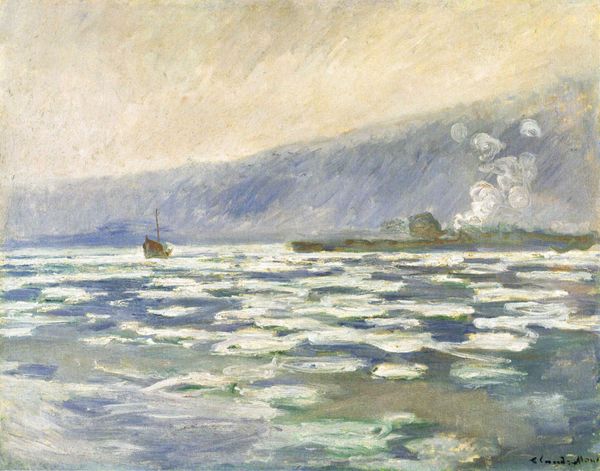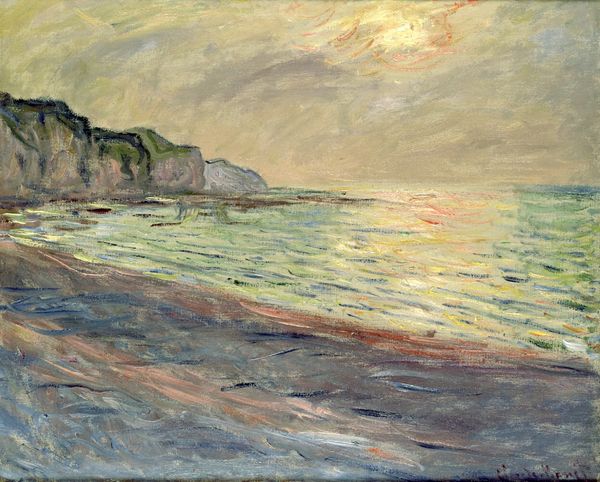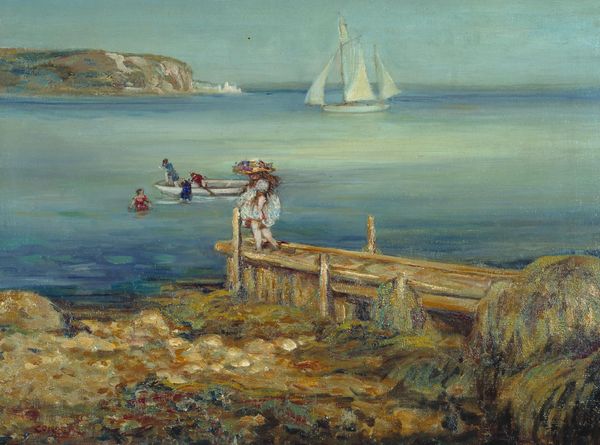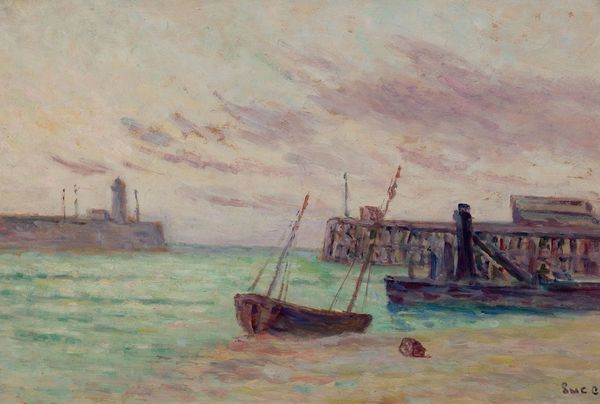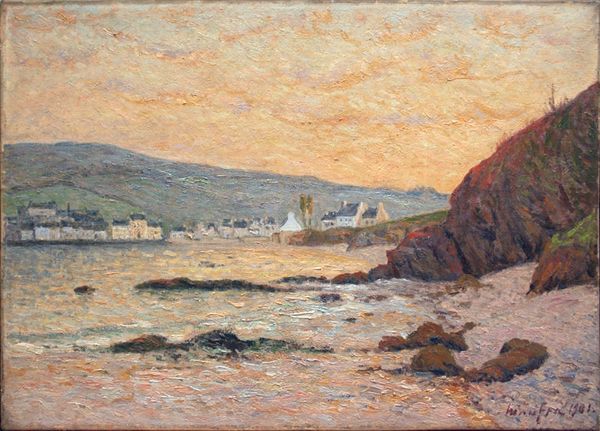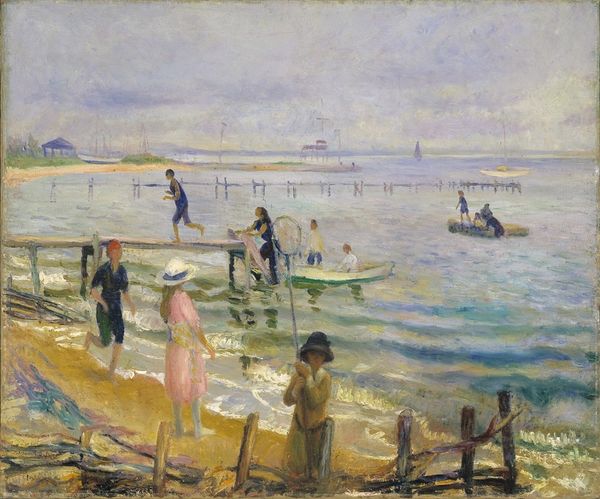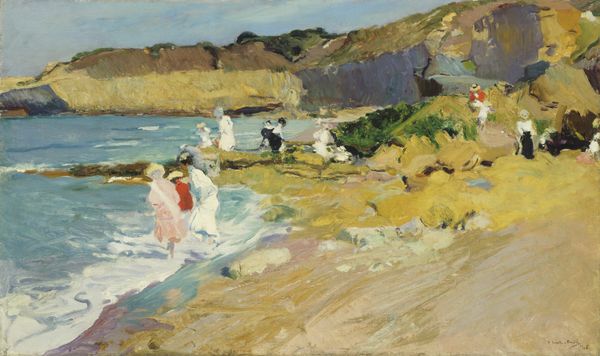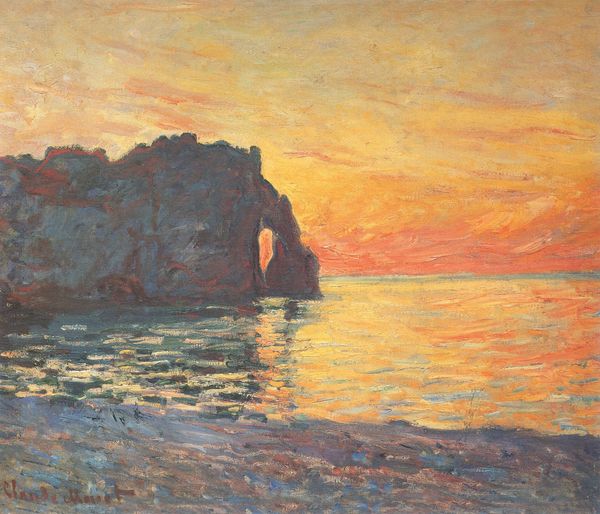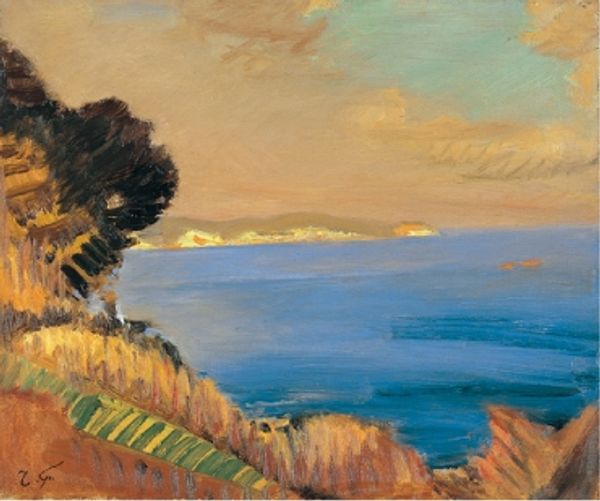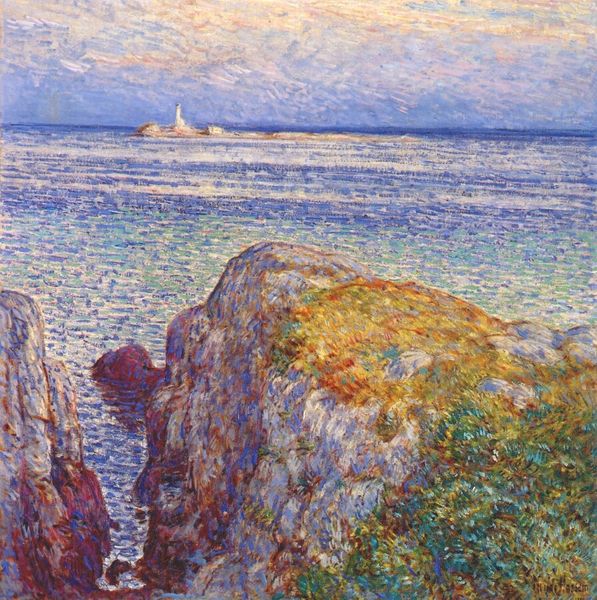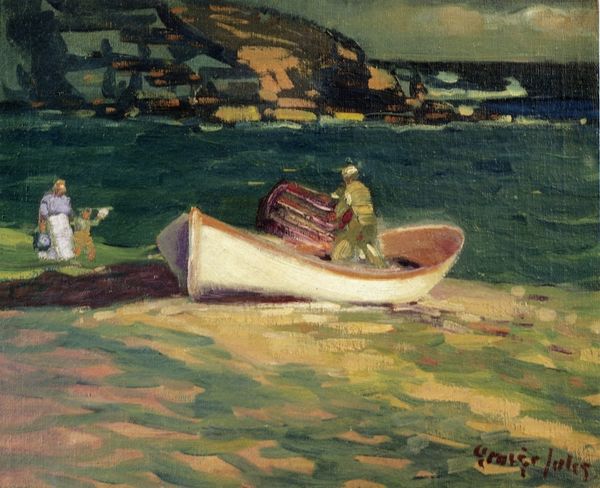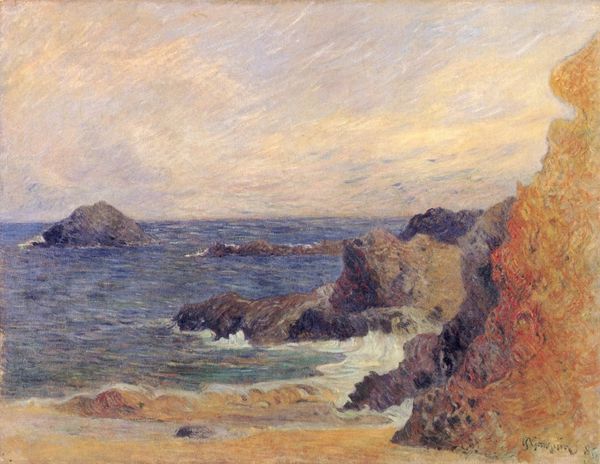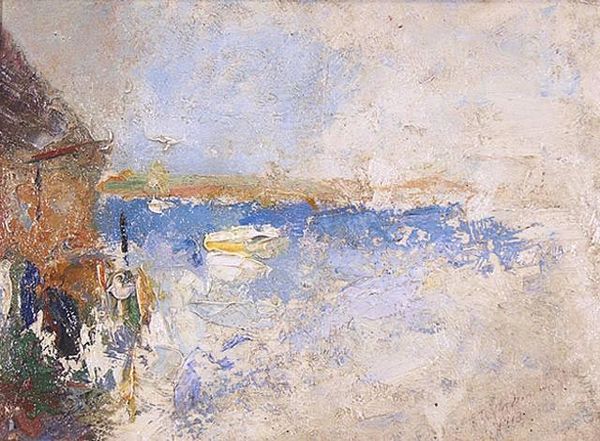
#
abstract painting
#
holy-places
#
impressionist landscape
#
possibly oil pastel
#
handmade artwork painting
#
oil painting
#
fluid art
#
acrylic on canvas
#
underpainting
#
painting painterly
#
watercolor
Copyright: Public domain
Curator: Takeji Fujishima's "A Windy Day," painted in 1908, immediately evokes a sense of melancholy contemplation for me. Editor: I agree. The composition—the lone woman standing at the pier, the muted tones, the restless brushstrokes—certainly creates that feeling. What do we know about the context of this work? Curator: Well, Fujishima was instrumental in introducing Impressionism and Art Nouveau to Japan. He spent time studying abroad in Europe during a period of intense westernization in Japan. Considering the sociopolitical implications of Japan at that time, particularly its engagement with Western modernity, the artwork becomes more complicated. The figure of a woman, posed pensively with an implied future that has no limits; does that suggest modern Japanese identity as perceived then? Editor: That’s interesting. How does it relate to art institutions in Japan at the time? Was Fujishima advocating for any kind of new role for art or artists? Curator: Absolutely. His synthesis of Western techniques with Japanese aesthetics challenged the prevailing artistic norms in Japan, where traditional styles were still dominant, and he became influential in establishing a modern art scene there. There’s a clear dialogue being forged, but that also leads to a tension. Looking at it through a post-colonial lens, one has to ask: what exactly is this moment of so-called "windy day" offering the Japanese public at that time? Editor: It's fascinating how this single image encapsulates so much of that cultural and artistic negotiation. The title is, for instance, both simple and open-ended. It points toward something natural, inevitable even, like societal transformations. Curator: Indeed. And the choice of portraying a woman adds further layers, particularly given the burgeoning feminist movements of the early 20th century. This all gives "A Windy Day" additional meaning that’s not limited to it just being aesthetically appealing. Editor: Seeing it now through both an art-historical and activist's perspective makes me realize how relevant a painting made more than a century ago remains in discussions about identity, progress, and representation. Curator: It underscores the vital role that historical analysis plays in understanding artworks as not just objects of aesthetic pleasure, but as active participants in the narratives of their time.
Comments
No comments
Be the first to comment and join the conversation on the ultimate creative platform.
